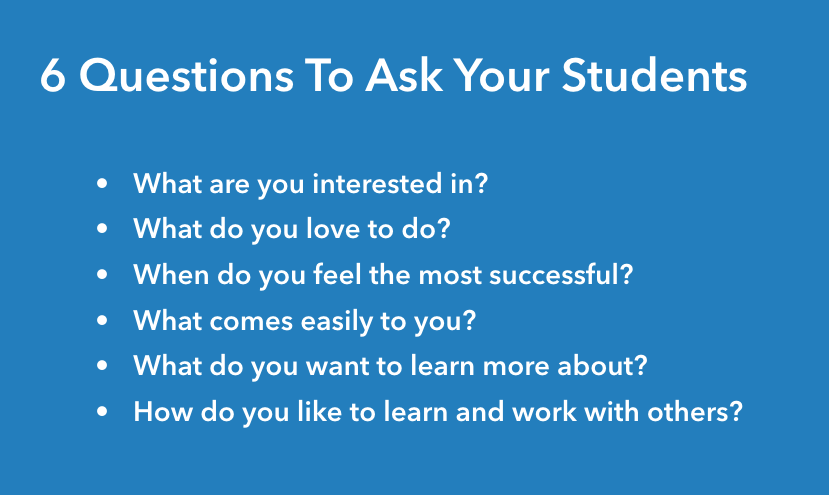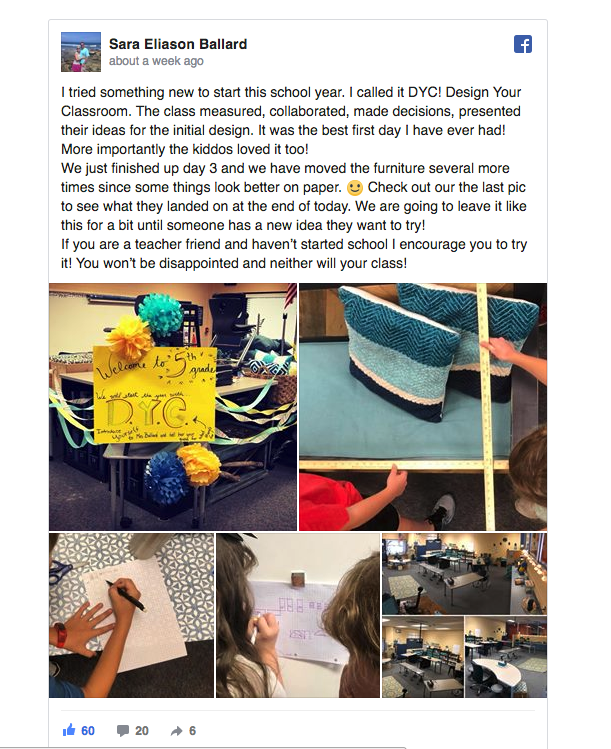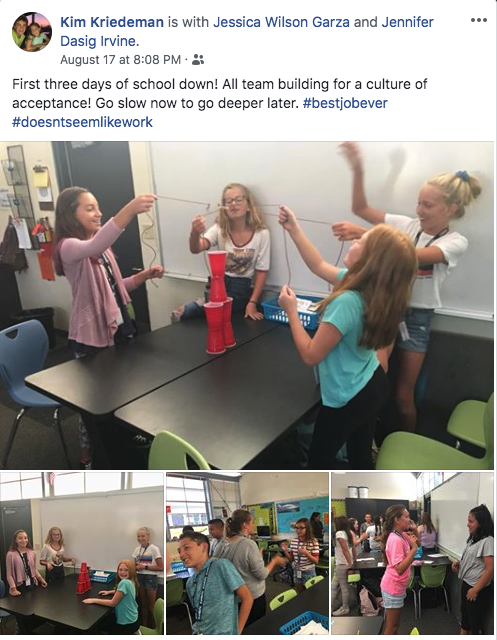Many classroom management gurus advocate that procedures and policies are the keys to classroom success. Others might tell you rules and expectations or the syllabus are a must in the first days of the school. Now I am not going to argue that these things aren’t important, they are! But if you believe (and I do) that significant learning does not happen without significant relationships between teachers and students, and the students with one another, then shouldn’t we start there?
I have been encouraged with the thoughtful ways that teachers are starting the year and focusing on the learners and the learning community. Here are 4 ways that I have seen recently that are great examples of how we can prioritize the learners and relationships to create learner-centered classrooms:
1.Get to Know the Learners
There is no substitute for a teacher who knows their students and designs authentic, participatory, and relevant learning experiences for the unique population of students they serve. A learner-centered approach focuses on the unique learners and how to create relevant experiences where they are empowered to move from their point A to their point B. To gather insight into how to meet the needs of the learners rather than assuming we know what they need, we can better understand and refine our practices when we ask questions and honor the voices of those we serve.
Here are 6 questions that are really powerful to start that conversation:

I love this example of the “culture flags” by Liz Wolford who used these questions to learn about her students.
First day is in the bag! We made culture flags that reflect on the 6 questions from @katiemartinedu I'm so pumped for this year! @AltonaMS #learnersforlife #middleschool #EducationForAll pic.twitter.com/qtQ3zxnaoj
— Liz Wolford (@IAmWolford) August 16, 2018
2. Design the Space Together
I have always believed that it is important the students felt that the classroom was ours, not mine. I always co-constructed our expectations and still think that is critical but I recently saw this post from my amazing cousin and 5th-grade teacher, Sara Ballard, where the students got to design their classroom on the first day. The process of co-creating the space is an important aspect of building community. Not only do students immediately have ownership in their classroom and learn so many amazing skills in the process, think of all the time that is saved when you don’ t have to do it all yourself! Note: This approach can be used to allow students to do much more of the work both cognitively and physically in the classroom– Check out more here- Are you Over-scaffolding?

3. Create Community Agreements
Alfie Kohn argues that, “Threats and bribes can buy a short-term change in behavior, but they can never help kids develop a commitment to positive values. In a consequence-based classroom, students are led to ask, ‘What does she want me to do, and what happens to me if I don’t do it?” In a reward-based classroom, they’re led to ask, “What does she want me to do, and what do I get for doing it?”
In my book, Learner-Centered Innovation I wrote about moving from classroom management to the classroom community. I believe that we need to have rules and procedures that facilitate productive learning environments but to create learning environments where students feel valued and a sense of ownership, I found much more success as a teacher creating learning environments that foster a community of empowered learners.
I saw great examples of this when I was just visiting Design 39. Instead of listing rules on the board or reminding students how to behave (which they often already know) students were asked them to think about how they wanted to be treated and how they wanted to treat others in the community. First, students independently reflected, then they shared in small groups, and finally put the big ideas into a list of community agreements.
4. Learn How to Work Together
Instead of focusing efforts on managing students, what if we engage students in thinking for themselves? When we demand student obedience and the following procedures with little to no buy-in or reason to follow, we get compliance. Instead, if our goal is to gets kids to start thinking their way through complex problems and working with others to do so we need to create opportunities where they can learn and develop the skills to do that.
Kim Kriedeman, an awesome middle school teacher at VIDA, shared recently how she started the year building relationships, engaging in problem-solving projects together and creating a “culture of acceptance”.

I love seeing these examples in diverse contexts of building the community focused on getting to know learners and building authentic relationships.
If you have other examples, please share in the comments!





I love the create an environment together!